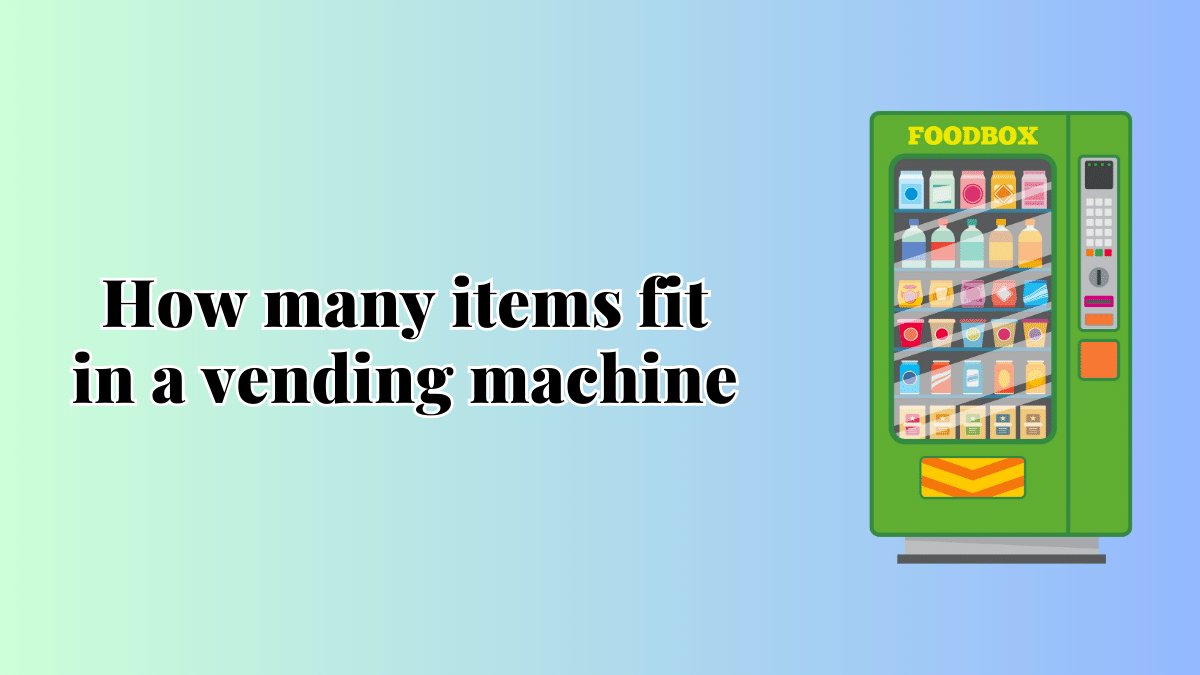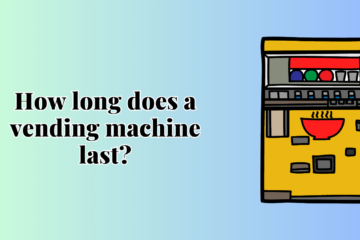Vending machines have become an integral part of our lives, offering convenience and quick access to various products. But have you ever wondered just how many items fit in a vending machine? In this article, we’ll dive deep into the world of vending machines, exploring their capacities, dimensions, and what influences the number of items they can hold. Whether you’re a vending machine enthusiast, business owner, or simply curious, this article will provide valuable insights and answers to all your questions.
A vending machine’s capacity depends on several factors, including its size, product type, and design. Let’s explore these factors in detail:
1. Size and Type of Vending Machine
The size and type of vending machine play a crucial role in determining its capacity. Standard vending machines come in various sizes, ranging from small countertop models to large freestanding units. Generally, the larger the machine, the more items it can accommodate.
2. Product Packaging and Size
The packaging and size of the products being sold also affect how many items can fit inside a vending machine. Compact, individually wrapped snacks take up less space compared to larger items like bottled beverages.
3. Configuration and Shelving
Vending machines can have different configurations and shelving options. Some machines have adjustable shelves, allowing for flexibility in arranging products. The organization and layout of items can significantly impact the number of products that can be stocked.
4. Product Type – Snacks, Beverages, or Both
The type of products being dispensed also matters. Snack vending machines typically have more compartments to hold a variety of snacks, while beverage vending machines prioritize space for drink storage.
5. Temperature and Cooling
Refrigerated vending machines require space for cooling mechanisms, which may reduce the overall capacity compared to non-cooling machines.
6. Refilling and Maintenance
Vending machine operators need to consider how often they’ll need to refill the machine and perform maintenance. Higher refill frequencies may require smaller product inventories to ensure freshness.
7. Average Product Size
To maximize capacity, vending machines often stock products of similar sizes to avoid wasted space. Finding the optimal balance between different product sizes is crucial.
8. Target Audience and Demand
Understanding the target audience and their preferences can help determine the right mix of products and quantities to stock in the machine.
9. Local Regulations and Restrictions
Some regions have specific regulations regarding vending machines, such as limiting certain products or imposing capacity restrictions.
Factors Affecting Vending Machine Capacity: Explained
Let’s delve deeper into the factors mentioned above and understand their impact on a vending machine’s capacity:
a) Size and Type of Vending Machine
Larger vending machines, such as those found in high-traffic areas like airports or train stations, have more space for products. These machines often have multiple compartments, allowing for a diverse product selection.
b) Product Packaging and Size
Products that come in compact, space-efficient packaging can fit more per shelf, increasing the overall capacity of the vending machine. Bulkier items, on the other hand, limit the number of items that can be accommodated.
c) Configuration and Shelving
Some vending machines feature adjustable shelves, enabling operators to customize the layout based on the product mix. Clever organization can maximize space utilization.
d) Product Type – Snacks, Beverages, or Both
Machines designed specifically for snacks or beverages are optimized for the respective product type. Snack vending machines may have spiral dispensers, while beverage machines prioritize can and bottle storage.
e) Temperature and Cooling
Refrigerated vending machines offer cold beverages and perishable snacks but require space for cooling mechanisms. This may reduce the overall capacity compared to non-cooling machines.
f) Refilling and Maintenance
Frequent refilling and maintenance require easy access to the machine’s internals, which may influence its design and capacity.
g) Average Product Size
Efficient use of space is achieved by stocking products with similar dimensions, minimizing gaps and maximizing capacity.
h) Target Audience and Demand
Understanding consumer preferences and purchasing patterns helps operators make data-driven decisions about product assortment and quantity.
i) Local Regulations and Restrictions
Compliance with local regulations ensures vending machines meet legal requirements and operate smoothly.
The Optimal Capacity for Different Types of Vending Machines
Now that we’ve explored the factors affecting vending machine capacity, let’s discuss the typical number of items that different types of vending machines can hold:
A) Snack Vending Machines
Snack vending machines come in various sizes and configurations. On average, a standard small-to-medium-sized snack vending machine can hold between 100 to 300 items. Larger, freestanding machines with multiple compartments may stock up to 500 items or more.
B) Beverage Vending Machines
Beverage vending machines, specializing in canned and bottled drinks, generally have more significant capacity than snack machines. Small to medium-sized beverage machines can hold around 100 to 250 drinks, while larger models may accommodate 400 to 800 beverages.
C) Combo Vending Machines
Combo vending machines, which offer a mix of snacks and beverages, strike a balance between the two. They usually hold 150 to 400 items, depending on their size and design.
D) Specialty Vending Machines
Some vending machines cater to specific products, such as ice cream or fresh foods. These machines have unique storage and cooling requirements, with capacities ranging from 50 to 200 items.
FAQs
- Q: How many items can a small vending machine hold?
A: Small vending machines can hold around 100 to 150 items, depending on the product type and packaging. - Q: Are larger vending machines more profitable?
A: Yes, larger vending machines with higher capacities can generate more revenue by offering a wider selection of products. - Q: Can I adjust the shelves in a vending machine?
A: Some vending machines have adjustable shelves, allowing operators to customize the layout based on product sizes. - Q: What’s the most popular item in vending machines?
A: Snacks like chips and chocolates, along with soft drinks, are among the most popular items in vending machines. - Q: Do vending machines require electricity?
A: Yes, most vending machines need electricity to power the cooling systems and dispensing mechanisms. - Q: How often should I restock my vending machine?
A: The restocking frequency depends on demand and product shelf life. On average, once a week is common for most vending machines.
Conclusion
Understanding how many items fit in a vending machine is essential for vending machine operators and business owners. The capacity is influenced by the machine’s size, product type, packaging, and overall design. Snack machines typically hold around 100 to 300 items, while beverage machines can accommodate 100 to 800 drinks. Combo machines offer a mix of both, striking a balance between snack and beverage capacity.
Next time you approach a vending machine, take a moment to appreciate the intricate logistics that go into stocking it with your favorite treats. From optimizing product placement to considering demand and regulations, vending machines are a fascinating blend of technology and convenience.




